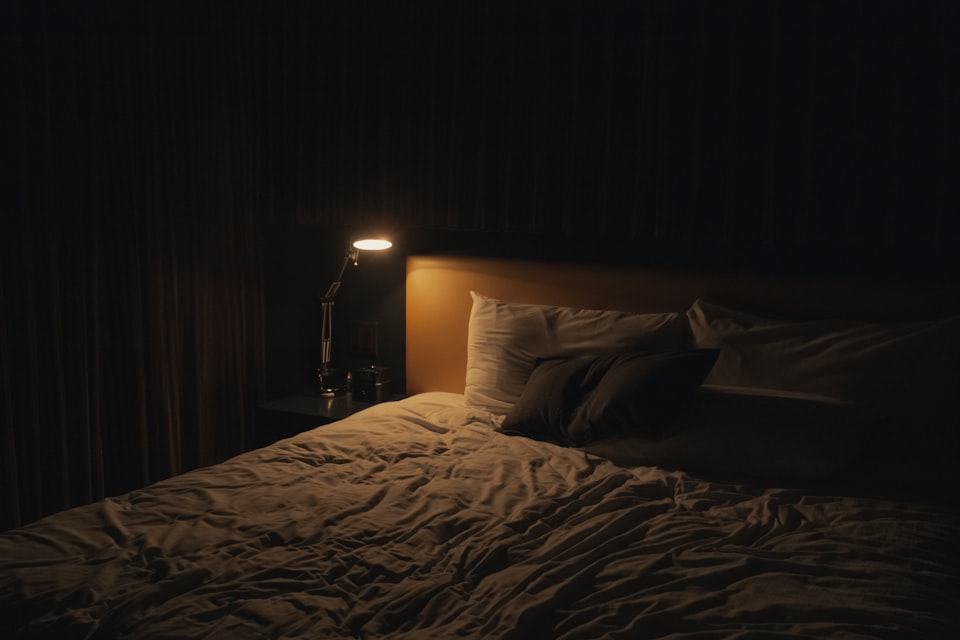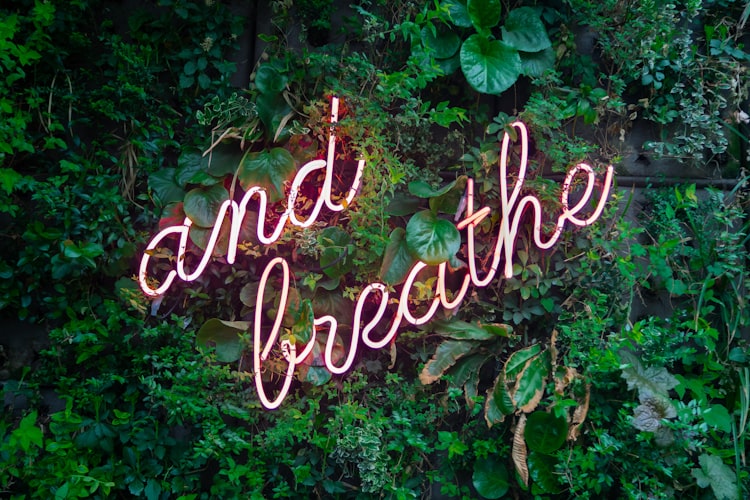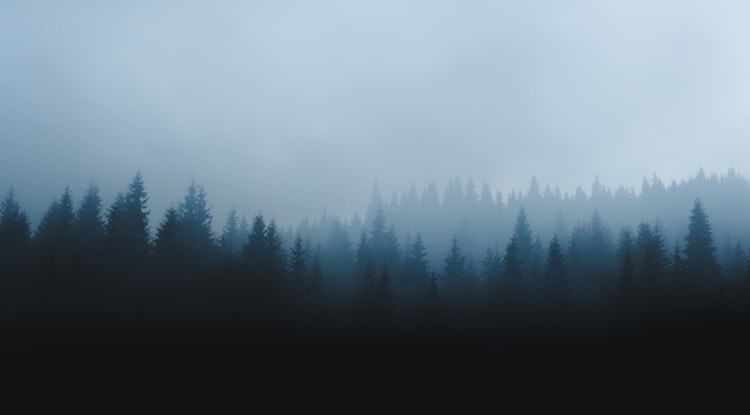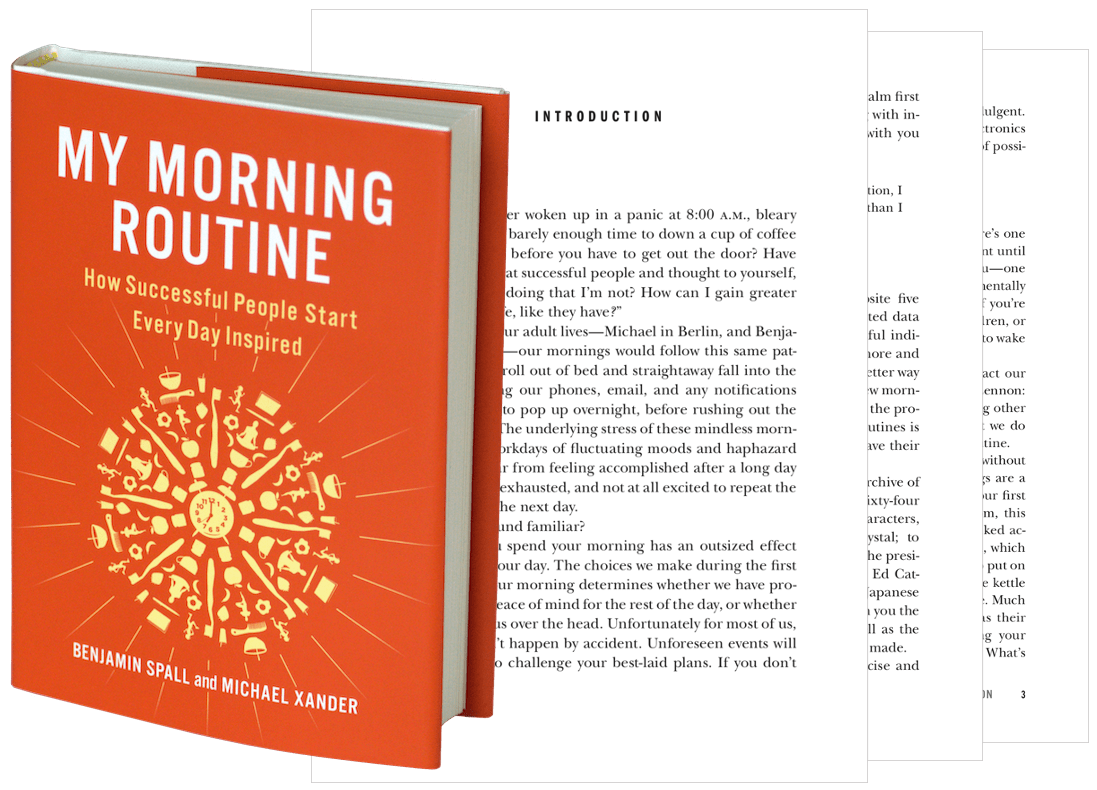The Perfect Sleep Environment

We’ve heard it must exist, but the perfect sleeping environment still eludes most of us despite our best efforts.
Though the simplicity of the three areas I’ll cover is clear, I’ve gone into some detail on each. If you decide to use any of the recommendations I’ve written of I’d suggest you only make a couple of changes at a time.
There are hundreds of reasons why you may be struggling to sleep that are unrelated to your sleep environment (such as the movements of your bed partner, drinking alcohol before bed, or an uncomfortable mattress), but if these haven’t presented themselves it’s your duty to yourself to deal with your environmental factors first.
Light
The perfect sleep environment is dark. Very dark.
Despite all the good electric lighting has brought us, artificial lights are the enemy of a good night’s sleep as our bodies haven’t had enough time to adapt and evolve with the number of artificial lights littering our homes throughout the night.
Quoted from Sleep: A Very Short Introduction by Steven W. Lockley and Russell G. Foster:
The introduction of electric lighting in the 19th century, and the restructuring of work hours and social schedules caused by industrialization, have meant that our species has become progressively detached from the natural 24-hour cycles of light and dark.
The 24-hour cycles of light and dark, regulated through our eyes, are essential for getting a good night’s sleep, but our modern use of artificial lighting is having a profound impact on our nighttime light exposure (something our ancestors would have never experienced), which is doing untold damage to the quality of our sleep.
Under natural conditions melatonin is released early in the evening to make us drowsy and prepare us for sleep. But in our modern society artificial light disrupts our light/dark cycle (called our circadian rhythm; circadian meaning ‘about a day’ in Latin), preventing melatonin production until after we’ve turned out our bedroom lights and put down our phones.
It’s been suggested that the use of electric lighting to extend our day beyond that of our candle-bearing ancestors has many health implications, though not everybody working in the field of sleep research agrees with these theories. From Sleep: A Very Short Introduction:
Light exposure at night elevates heart rate and so waking repeatedly at night might increase the variability in heart function at a time when, under natural conditions, bright light would never be seen… The widespread use of electric lighting at night effectively consigns society to live in a never-ending metabolic summer — perhaps the increased rates of obesity are in part because we never experience a biochemical winter to use up the fat stores laid down earlier in the year.
The Bluest Light
More than any other color, blue light (the color that comes off our phone, tablet, and computer screens) shifts the rhythm of our circadian clock, blocking melatonin production, helping us to stay awake and alert through an increase in reaction times and continued activation in areas of our brain that would otherwise be slowing down; preparing for a less active role during sleep.
Blue light is so harmful to proper sleep that ‘blue-light therapy’ is a treatment for people suffering from seasonal affective disorder (also known as winter depression), helping to pep them up by having them sit in front of a light box for a number of sessions each day.
Stripping the Blue Light
One of my favourite Mac applications (also available on Windows and Linux) is a free program called Flux which offers a powerful compromise to those of us worried about ruining our sleep by staring at our screens into the evening, but who appreciate having these hours to work when needed.
Flux works by stripping the blues from your screen as the sun begins to set, uncovering a strong yellow glow that’s softer on our eyes. Unfortunately Flux isn’t available on iOS (unless you jailbreak your phone), but there are a number of options for Android users, including Twilight and Night Filter.
Removing Light from Your Bedroom
The ideal sleep environment shouldn’t use any artificial lighting, but this is an unreasonable ask (if you’re willing to go the no-artificial lighting route read this educational, funny piece by J.D. Moyer on his experiences doing exactly that).
One step in this direction would be to use your electric lighting on a dim setting if your overhead lights allow (if not, invest in a lamp that does). Better still, use a dim red-bulb, as red light doesn’t affect our circadian rhythm as much as white or blue lighting.
Turning off Standby Lights
It may sound petty, but the pinpoint standby lights that litter your bedroom have an affect on the quality of your sleep. The darker your room, the more noticeable they will be. Turn them off. You’ll thank yourself in the morning.
Hang Heavy Curtains or Wear a Sleep Mask
The recent popularity of blinds and thin curtains may have tidied up our windows, but they haven’t done much to improve the quality of our sleep.
The brighter lighting inside our homes is coupled with much brighter nighttime environments outside our homes, especially if we live in a city (as a general rule, you shouldn’t be able to see from one side of your room to another once your eyes have adjusted to the darkness).
Block out outside light with heavy curtains, or wear a sleep mask. Though they’re not the most comfortable solution, I wear a sleep mask for the last third of the night during the summer; often waking around 4:00am to reach across for it, rather than putting it on when I go to bed.
Sound
Noise can be an issue depending on what sleep stage you’re in when a sound occurs, as well as an unending range of other factors.
New parents, for example, tend to be more alert to noises in their home than childless couples, though it could be argued that this is because they rarely get the chance to fall into deep sleep…
If you’re frequently hounded by the sounds outside your window you have two options: wear earplugs, or use a white noise machine.
Using a white noise machine (or app) is an option if the noise keeping you awake can be drowned out by the machine. If you need complete silence to sleep I’ve suggested wearing earplugs to many friends and family members over the years, but two complaints keep coming up; they don’t like the way they feel, and they’re scared they’ll sleep through their alarm.
Both of these complaints are valid, but you can find comfortable earplugs that you’ll get used to wearing if you look hard enough, and if you’re worried about sleeping through your alarm you should try them out on a night you don’t have to get up for work in the morning, making sure to put your alarm on its maximum volume setting. It works for me.
If you often find yourself sleeping through your alarm, waking up feeling groggy and disoriented, you may want to start going to bed earlier or take afternoon naps, as there’s a good chance you’re not getting enough sleep.
Temperature
Your body temperature rises and falls during REM (rapid eye movement) sleep, meaning you’re better off sleeping in a cool environment than a warmer one, as sleeping in a warm room can be uncomfortable and your rising body temperature during REM sleep has a good chance of waking you in the middle of the night.
Sleeping in a cool environment is so conducive to a good night’s sleep that there’s a popular treatment for insomnia known as ‘passive body heating’ where you take a hot bath an hour or two before your bedtime to raise your core body temperature. The change in your body temperature (as you cool down after your hot bath) makes you sleepy as you expend excess energy to make such a temperature drop possible. The same sleepiness occurs if you take an ice-cold bath, as it’s the energy needed to bring your body back to its core body temperature that causes your sleepiness, rather than the temperature of the bath itself.
Regulating your body temperature before going to sleep, and during the night, plays a large role in keeping you asleep. Quoted from Sleep: A Very Short Introduction (forgive the length, it’s worth it):
Temperature regulation is a key factor in falling and staying asleep, and poor temperature regulation is associated with sleep complaints. Poor circulation is one potential cause and may be associated with sleep complaints in older people.
As we go to sleep, core body temperature falls more quickly than the natural circadian decline, and is accompanied by increased heat loss at our extremities (hands and feet). People with poor circulation and cold hands and feet cannot lose as much heat and take longer to get to sleep. Warming the hands and feet, which causes vasodilation and increases body heat loss, increases sleepiness and increases the likelihood of falling asleep.
So Grandma was right — bed socks and a night-cap are a good idea, as they will increase overall heat loss and help you get to sleep.
The perfect sleep environment does exist, but it requires us to make some changes to the way we prepare for a night of sleep well ahead of our head hitting the pillow.
Though many factors affect the quality of our sleep (with having a consistent sleep routine being one of the most positive), sleeping in a perfect (or close to perfect) sleep environment can make all the difference. ∎
This post was first published on Medium. If you enjoyed it, please recommend it on Medium and follow me there!




